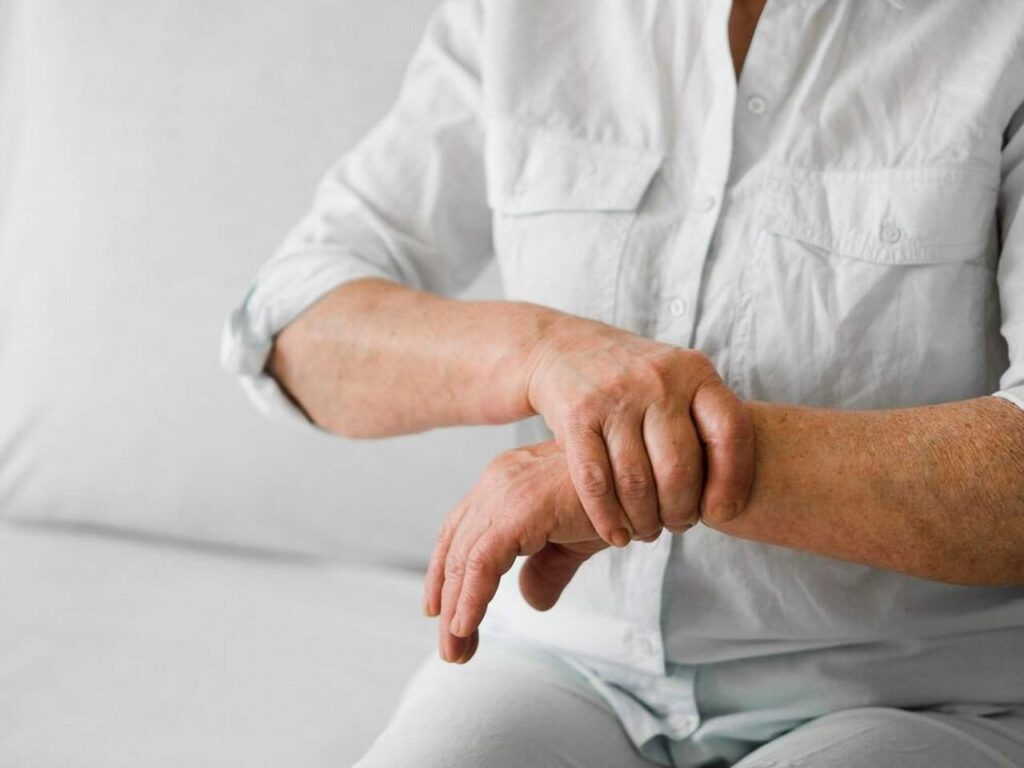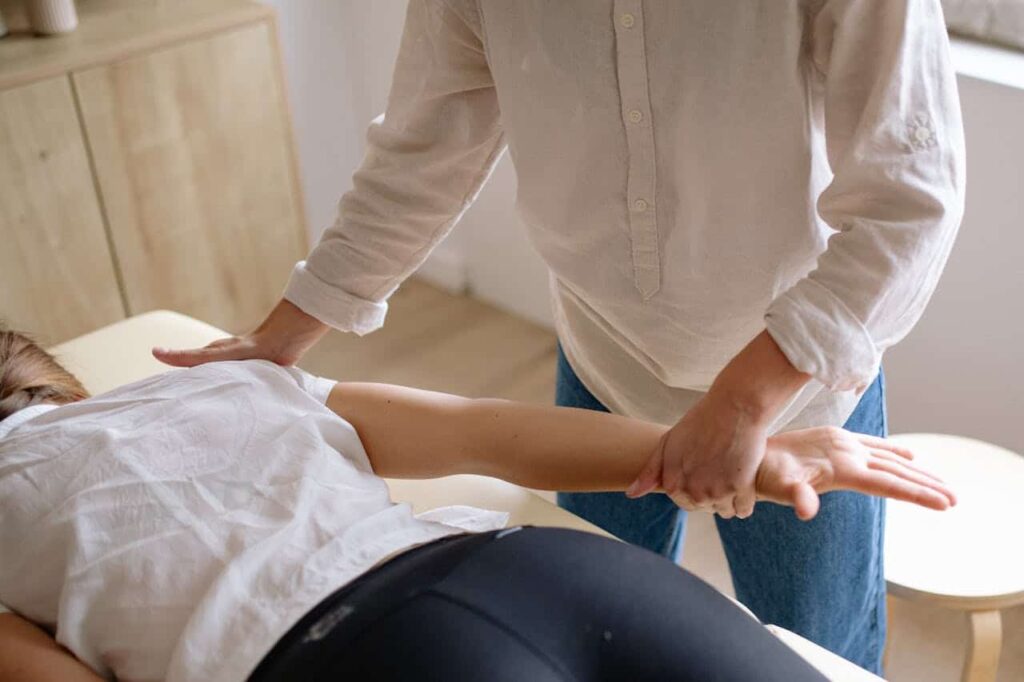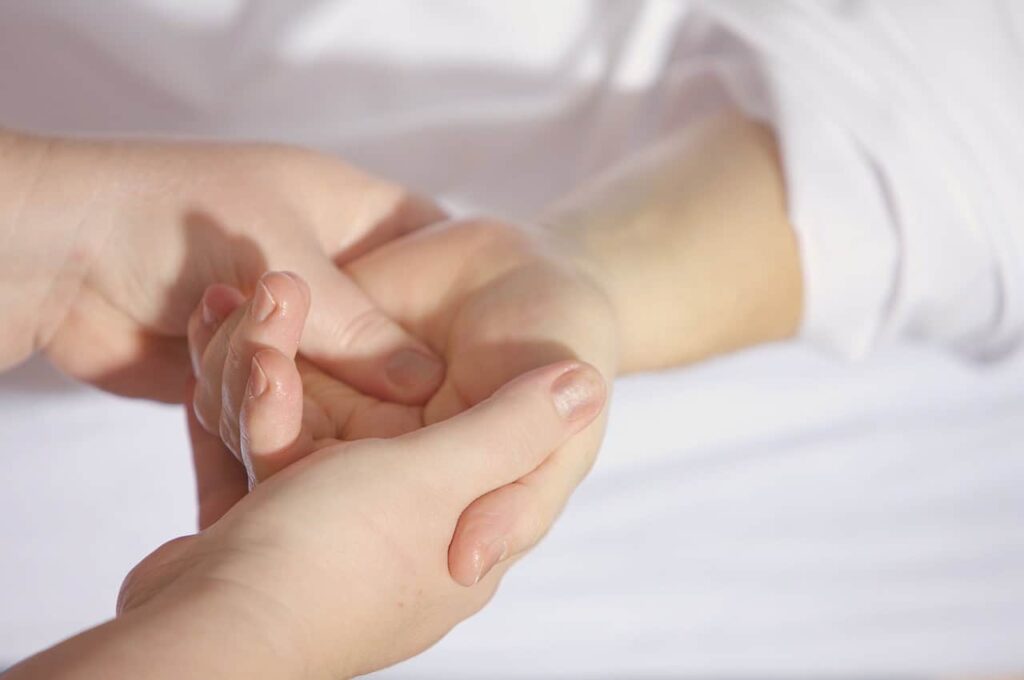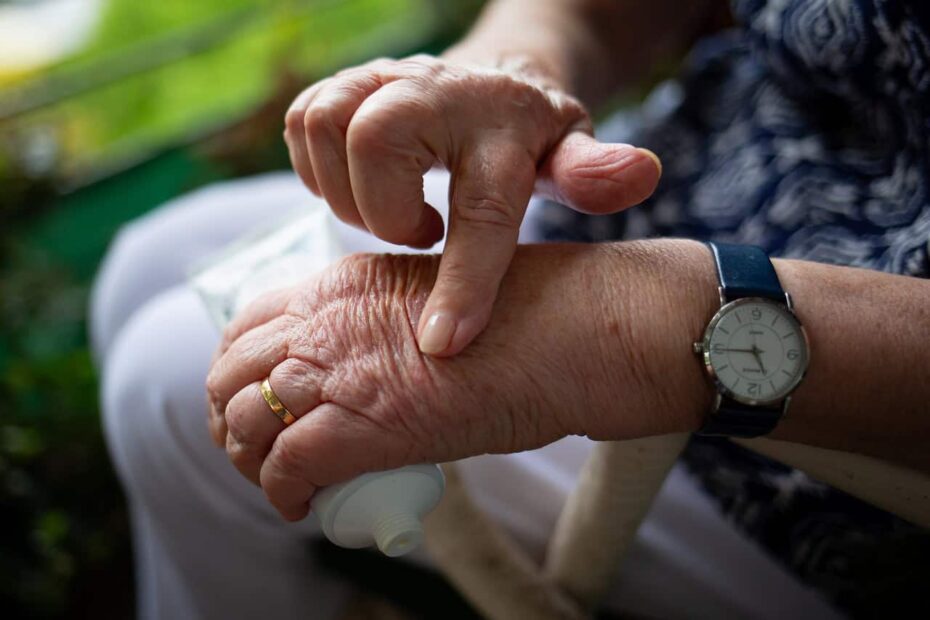Living with rheumatoid arthritis feels like fighting a tough battle. Your body attacks itself, causing pain and stiffness. Many people wish for just a little relief, wanting to move without pain.
That’s where physical therapy comes in. It helps improve joint function and quality of life. Studies show that specific exercises can reduce fatigue, increase strength, and make you feel better.
For many Canadians, physical therapy is more than just a treatment option for arthritis. It’s a way to regain hope and independence. It helps them deal with the challenges of rheumatoid arthritis.
Understanding Rheumatoid Arthritis
Rheumatoid arthritis (RA) is a chronic condition where the immune system mistakenly attacks the joints. This leads to a lot of joint inflammation. It usually starts in smaller joints like those in the hands and feet.
As it gets worse, people may feel more pain, stiffness, and have trouble moving. The disease goes through different stages: early, moderate, severe, and end-stage. Knowing about these stages helps doctors manage symptoms better.

RA mostly affects people between 30 and 60 years old. Women are more likely to get it than men. Having a family history of RA also raises the risk.
RA can have predictable or unpredictable flares. Predictable ones often come from stress, infections, or too much work. Unpredictable ones happen without warning. This makes it hard for doctors to treat everyone the same way.
Recently, experts like Clifton O. Bingham III, MD, have been working to understand RA better. They use patient feedback to improve treatment plans. This makes treatment more tailored to each person’s needs.
The Importance of Physical Therapy for Rheumatoid Arthritis
Physical therapy is crucial for managing rheumatoid arthritis (RA), a common autoimmune arthritis. It helps improve mobility, lessen pain, and boost overall health for those with this chronic condition. Physical therapists create custom exercise plans for each patient, focusing on their specific needs.
Physical therapy helps strengthen muscles around joints, easing symptoms. Regular aerobic exercises fight RA-related fatigue and make everyday tasks less painful. Cardio exercises also help manage weight, which can lower inflammation and slow RA’s progress.
It focuses on improving mobility, like walking and climbing stairs. Active exercises and balance drills boost physical abilities. Passive treatments, such as massage and stretching, help reduce pain and keep joints working well.
Living independently is a key goal for people with RA. Physical therapy builds strength, flexibility, and aerobic capacity. This helps with daily tasks. Early diagnosis and regular physical therapy help manage symptoms and prevent flare-ups, keeping a person active.
Goals of Physical Therapy in Treating Rheumatoid Arthritis
The main goals of physical therapy for RA are to make life better for those with the condition. It aims to improve joint mobility and help people use affected areas as they should. These goals are key for doing everyday tasks.
Therapists design special exercise plans focusing on important areas like:
- Increasing joint range of motion
- Building strength to support joints
- Improving coordination and balance
Strength training is a big part of managing rheumatoid arthritis. It helps increase muscle mass, strength, and endurance. This can make it easier for patients to handle their daily activities.
Physical therapy also teaches patients how to manage their symptoms and keep moving well. This helps them stay independent. Learning these skills makes patients better at handling RA and keeps them active in their lives and care routines.

Types of Physical Therapy Techniques for Rheumatoid Arthritis
Physical therapy techniques are key in managing rheumatoid arthritis. They are divided into active and passive treatments. Active treatments help build strength through exercises. Passive treatments ease pain with methods like massage and heat.
Common RA exercises include:
- Aerobic exercises: Walking, biking, or swimming can help reduce inflammation and manage weight.
- Stretching exercises: Gentle stretches improve flexibility and keep joints moving.
- Strengthening exercises: These are crucial for people with RA to reduce joint stress and boost function.
- Joint stabilization exercises: These help improve control and strength around affected joints.
Studies show that regular physical activity can lessen rheumatoid arthritis symptoms. It’s advised to do two to three sets of exercises with eight to twelve repetitions, three times a week. During flare-ups, avoid intense activities and stop if they make the pain worse.
For passive treatments, therapies like massage, heat, and splints are used. These methods help reduce pain and stiffness, making life better for patients. Together, active and passive treatments help increase strength, flexibility, and endurance. This makes it easier for patients to handle everyday tasks with less effort.
A comprehensive physical therapy plan, tailored to each person’s needs, can greatly improve managing rheumatoid arthritis symptoms.
Also Learn About Wrist Pain Physiotherapy
What to Expect From a Physical Therapy Session
A physical therapy session is a place where people with rheumatoid arthritis can work on getting better. These sessions last about an hour. They start with an assessment of how well you move and how much pain you have.
This assessment helps the therapist understand your condition. They use this info to make a treatment plan just for you. This plan includes exercises and education tailored to your needs. The goal is to make your joints more flexible, lessen pain, and improve your overall health.
During these sessions, you’ll do various activities. These include:
- Personalized exercise routines designed to improve mobility and strength.
- Education on proper movement techniques to prevent injury.
- Strategies for managing symptoms outside of the therapy setting.
It’s important to have follow-ups to check on your progress. These follow-ups let therapists tweak your treatment plan if needed. This ensures you’re getting the most out of your therapy. Regular physical therapy can greatly improve your mobility, reduce pain, and enhance your life quality.
Specialized Exercises for Rheumatoid Arthritis
People with RA can greatly benefit from exercises made just for them. These exercises help with moving better, being more flexible, and getting stronger. Doing these exercises can make moving easier, lessen pain, and improve how well you can do daily tasks.
Studies show that exercising is safe for those with rheumatoid arthritis. It doesn’t make symptoms worse and can make you stronger and more flexible. Exercise is also key in reducing tiredness and helping with depression that some RA patients feel.
Common recommendations include:
- Heel raises: Strengthens calf muscles while promoting balance.
- Bridges: Enhances hip strength and core stability.
- Resistance band workouts: Builds strength without putting excessive strain on joints.
Walking is a great exercise for keeping bones strong, which helps prevent osteoporosis. If you have a lot of joint damage, you might want to try low-impact exercises like swimming, water aerobics, or cycling.
It’s important to do exercises within a comfortable range of motion. Usually, you should do each exercise about 20 times or as much as you can handle. If you’ve had a total hip replacement, wait at least three months before starting knee raises.
Walking every day can help stretch your back and leg muscles, making you more mobile. How you do each exercise is very important for getting good results. Getting help from a qualified physical therapist is key in building strength and flexibility.
Role of Occupational Therapy alongside Physical Therapy
Occupational therapy is key for people with rheumatoid arthritis, alongside physical therapy. It helps improve how well someone can do daily tasks. Occupational therapists change tasks and use devices to help people be more independent.
Occupational therapists teach strategies aimed at easing tasks affected by rheumatoid arthritis, ultimately reducing joint strain and improving overall quality of life.
People with rheumatoid arthritis find it hard with everyday tasks like getting dressed, cooking, and cleaning. Occupational therapy offers important help with:
- Training in skills to limit joint strain
- Educating on joint protection techniques
- Prescribing assistive devices for specific tasks
- Providing splints to support joints during activities
This helps people do their daily tasks with less pain and more ability. Occupational therapists give exercises to do at home. These exercises focus on making muscles stronger, improving flexibility, and increasing joint movement.
As rheumatoid arthritis gets worse, occupational therapy helps people adjust. It ensures they can keep doing daily tasks on their own. With the right advice and methods, people can handle arthritis challenges better. This improves their daily life and how much they can take part in social activities.

Finding a Qualified Physical Therapist in Canada
Looking for a physical therapist in Canada is important for treating conditions like rheumatoid arthritis. First, get referrals from healthcare providers. They know who has the right skills and experience for arthritis care.
Use tools like the American Physical Therapy Association’s locator or contact local medical centers. These can help you find therapists who know how to handle rheumatoid arthritis. All physiotherapists in Canada must be registered, showing they can work as therapists.
Check a therapist’s background by looking at their education, special areas, and extra certifications. You might want a physiotherapist who focuses on arthritis. They should offer programs that help with strength, flexibility, and moving more easily.
- Consult with primary care physicians for referrals.
- Check the therapist’s registration and qualifications in your province.
- Assess previous patient reviews to gauge effectiveness and techniques of various therapists.
- Confirm insurance coverage and the number of authorized therapy sessions before starting treatment.
By taking these steps, you’ll likely find a skilled physical therapist in Canada. This can help you recover and feel better overall.
Related Conditions Carpal Tunnel Syndrome
Cost Considerations for Physical Therapy
The cost of physical therapy for people with rheumatoid arthritis can change a lot. This depends on where the clinic is, the therapist’s experience, and how complex the treatment is. It’s important for patients to talk about costs with their therapy center to understand what they might pay.
Insurance can also affect how much you pay for treatment. Many insurance plans help cover physical therapy costs, but some might limit the number of sessions or have specific co-pays. It’s key for patients to know these details as they look for effective treatment for rheumatoid arthritis.
Knowing about the costs of physical therapy, like how often you’ll need it and what insurance covers, helps patients make better health care choices. Talking about these costs early on can lead to better treatment results and more satisfaction overall.
Long-term Impact of Physical Therapy on Rheumatoid Arthritis Management
Physical therapy has a big impact on managing rheumatoid arthritis over time. It helps reduce pain and inflammation. It also makes moving around easier and helps with daily tasks.
Studies show that physical therapy offers a full approach to dealing with rheumatoid arthritis. It includes exercises that make muscles stronger and joints more flexible. Things like manual therapy and aquatic therapy help patients do everyday things with less effort.
- Improved mobility and physical function
- Reduced pain and reliance on medication
- Enhanced mental well-being and reduced anxiety
- Increased engagement in social and recreational activities
Managing rheumatoid arthritis is different for everyone. Physical therapy works best when it’s tailored to each person. This way, treatment plans change as needed to help patients live better lives.
Patient Testimonials and Success Stories
Patients who have tried physical therapy for rheumatoid arthritis share their amazing stories. They talk about how much better they can move and how much less pain they feel. This shows how well physical therapy works for this tough condition.
“After starting physical therapy, I noticed I could move my hands more freely. The exercises focused on my specific needs, making a world of difference.” – A recent patient
Many people, like Jamie Stelter, thought only medicine could help their rheumatoid arthritis. But they found hope again with physical therapy. They felt better overall and enjoyed life more.
- Approximately 70% of patients incorporate healthy lifestyle choices to support their physical therapy efforts.
- Patients often discover that consistent therapy leads to long-term benefits, with many experiencing profound improvement in their daily activities.
- 80% success rate reported at specialized centers, like the Mayo Clinic’s Pain Rehabilitation Center, underscores the potential of effective pain management.
Adding physical therapy to their treatment helped many patients, including Aaron Sober. He found it made dealing with joint health issues easier. These stories show how important physical therapy is for those with rheumatoid arthritis.
Take Charge of Your Health and Find Relief with Rheumatoid Arthritis
Physical therapy is key in treating rheumatoid arthritis. It helps improve joint function and reduces pain. This makes life better for those with the condition.
With guidance from experts, patients can create treatment plans that fit their needs. This helps manage rheumatoid arthritis well.
Studies show that physical therapy boosts mobility and daily activities. It’s especially important for women affected by rheumatoid arthritis. Doctors and physical therapists work together to share the benefits of these therapies.
As treatment for RA changes, physical therapy is a top choice for relief and support. It helps people with rheumatoid arthritis manage their condition better.
Using physical therapy as part of a full treatment plan helps people with rheumatoid arthritis. It lets them take charge of their health. This leads to a better life despite the condition.
